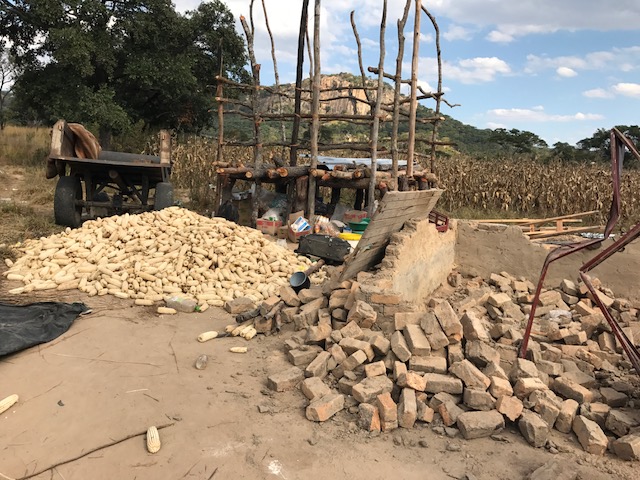In his inaugural address the new President of Zimbabwe, Emmerson Mnangagwa, confirmed that land reform was both historically necessary and irreversible. He also made a commitment to compensate farmers who were forced off their land during the fast track land reform programme of the 2000s.
Many international commentators read this as a sign of a more inclusive stance that could benefit economic recovery. Indeed, the recent reinstatement of an evicted white farmer is perhaps an indication that things are changing.
Mnangagwa has no option but to tackle land reform if he’s serious about getting Zimbabwe’s economy back on track. This is because agriculture continues to play a significant role.
Zimbabwe’s major land reform, starting in the year 2000, resulted in around 6 000 farms owned by about 4 500 farmers and companies being taken over. Former owners, most of them white commercial farmers, were evicted, sometimes violently.
Today around 145 000 households occupy 4.1-million hectares under smallholder resettlement schemes. Another 3.5-million hectares are used by about 23 000 medium-scale farmers.
One of the new government’s major policy priorities has to be to get agriculture moving as a motor of growth. The long-running issue of outstanding compensation payments has meant that international donors and financiers have not engaged with land reform areas, missing out on supporting major development opportunities.
Agriculture remains a mainstay of Zimbabwe’s economy. People on the resettlement farms are producing significant quantities of food and other agricultural products. For example, in the last season over half of the 2.2-million tonnes of maize produced in the country, as well as 60% of total tobacco output worth nearly $350-million, came from land reform areas. These numbers make it clear how vital they are to Zimbabwe’s struggling economy.
Fixing the system
Former commercial farmers held land under freehold title. In some cases bilateral investment agreements, mostly with European countries, also governed ownership. Yet, as part of the reform, land was expropriated by the state and allocated to new users. Initially this was done without regard to these rights.
The lack of redress, and the ongoing contestation over ownership of land, has caused uncertainty. This in turn has affected growth and investment. Many western countries have refused to undertake work in these areas, linked to a wider sanctions regime.
Resolving the compensation question is vital for seeking a way forward for Zimbabwe’s agricultural sector.
Of course offering compensation is not a new policy. Compensation for “improvements” on the land has been on offer for years. It was reconfirmed by the 2013 Constitution, negotiated by all political parties.
To date around half of all farms acquired during land reform have been valued by the government. In parallel, others have been valued by private surveyors and ValCon, an organisation backed by former large-scale farmers.
So far around 250 compensation settlements have been reached, amounting to a payment of around $100-million.
For farms where land was acquired under bilateral investment treaties, compensation for both land and improvements must be paid, adding to the costs.
What’s been missing has been the capacity to undertake valuations of the remaining farms; the funds to pay compensation; as well as the political will to see it through.
This may now have changed under Mnangagwa. A commitment has been made to a process of auditing, valuing and paying compensation, linked in turn to the issuing of 99-year leases and permits to use the land.
Who will pay and how?
The total compensation bill is likely to run into several billion dollars. Who will pay — and how — are the big questions.
A mix of payments across different liabilities will be required.
There will be private components, such as equipment that a new farmer is using, that will have to be paid off by larger-scale farmers. This payment can be done over many years through mortgaging arrangements, with upfront payments by the state to former owners.
For smallholder farmers, the “improvements” designed for large-scale farming have been less useful. And their ability to pay is much less. Here state or aid funding of compensation will be required.
Other public assets – such as a dam, a road, a building now being used as school or as an extension workers’ house – are more appropriately paid off by the state, or as part of a donor-financed or debt-rescheduling scheme.
Quick resolution is essential
Nearly 18 years after the land reform most evicted farmers want a quick, pragmatic solution. This has dragged on for too long. Former white farmers are ageing and are in urgent need of pension support. Others have moved on to different businesses or left the country. This is about acknowledgement, reconciliation and justice.
In a period when there have been currency changes, hyperinflation and dramatic shifts in the economy, valuation will always be an approximate science. While some will continue to contest the land reform in whatever court or tribunal that will hear them, most want resolution – and soon.
Resolving the compensation issue is essential not only to provide redress for those who lost their farms, but also to reduce uncertainty, encourage investment and unlock potential for growth and development.
Mnangagwa’s commitment is a good sign. But it now needs to be seen through, and urgently.








